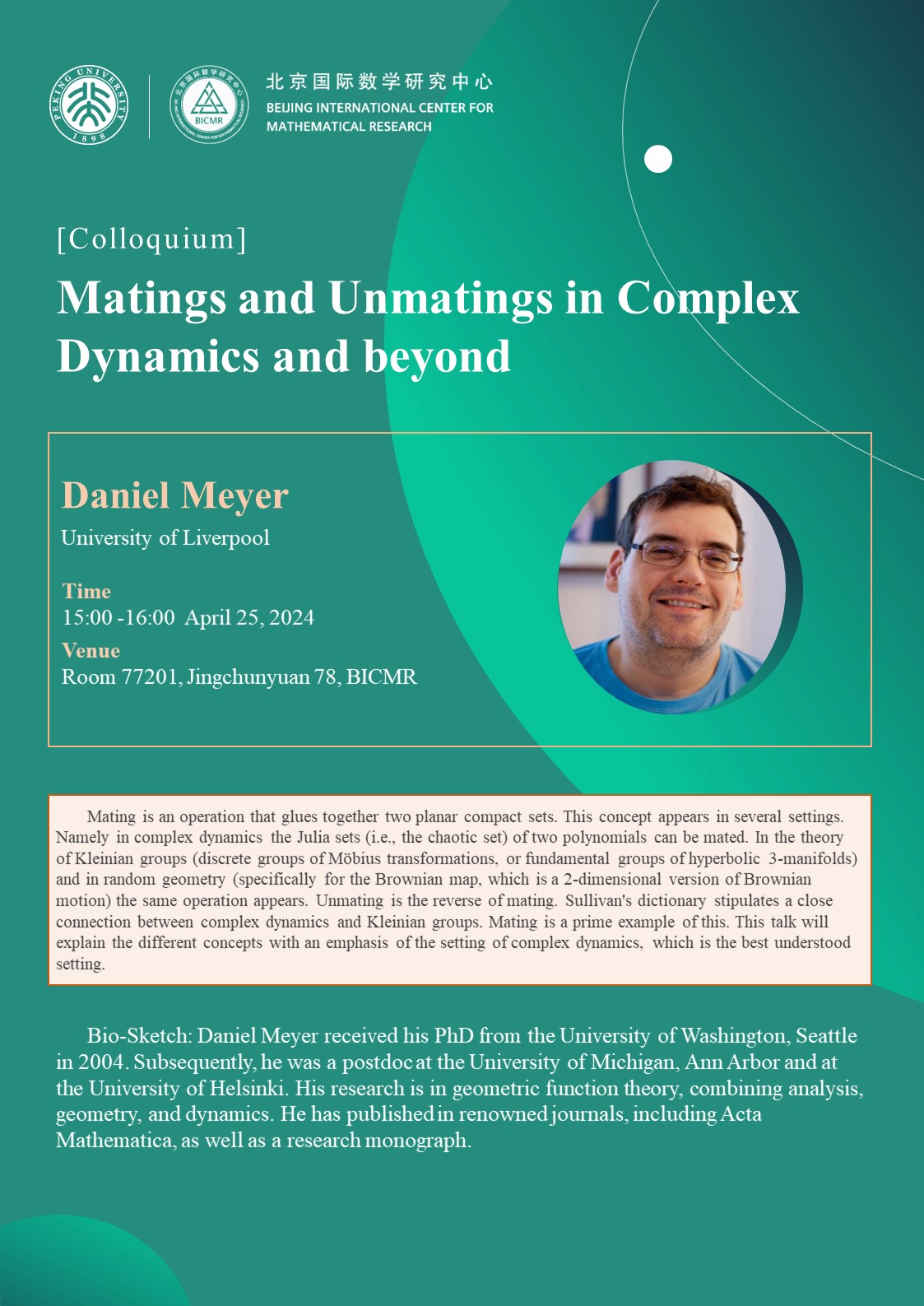Matings and Unmatings in Complex Dynamics and beyond
Time: 2024-04-24
Published By: Ruixin Li
Speaker(s): Daniel Meyer(University of Liverpool)
Time: 15:00-16:00 April 25, 2024
Venue: Room 77201, Jingchunyuan 78, BICMR
Abstract:
Mating is an operation that glues together two planar compact sets. This concept appears in several settings. Namely in complex dynamics the Julia sets (i.e., the chaotic set) of two polynomials can be mated. In the theory of Kleinian groups (discrete groups of Möbius transformations, or fundamental groups of hyperbolic 3-manifolds) and in random geometry (specifically for the Brownian map, which is a 2-dimensional version of Brownian motion) the same operation appears. Unmating is the reverse of mating. Sullivan's dictionary stipulates a close connection between complex dynamics and Kleinian groups. Mating is a prime example of this. This talk will explain the different concepts with an emphasis of the setting of complex dynamics, which is the best understood setting.
Bio Sketch:
Daniel Meyer received his PhD from the University of Washington, Seattle in 2004. Subsequently, he was a postdoc at the University of Michigan, Ann Arbor and at the University of Helsinki. His research is in geometric function theory, combining analysis, geometry, and dynamics. He has published in renowned journals, including Acta Mathematica, as well as a research monograph.
Mating is an operation that glues together two planar compact sets. This concept appears in several settings. Namely in complex dynamics the Julia sets (i.e., the chaotic set) of two polynomials can be mated. In the theory of Kleinian groups (discrete groups of Möbius transformations, or fundamental groups of hyperbolic 3-manifolds) and in random geometry (specifically for the Brownian map, which is a 2-dimensional version of Brownian motion) the same operation appears. Unmating is the reverse of mating. Sullivan's dictionary stipulates a close connection between complex dynamics and Kleinian groups. Mating is a prime example of this. This talk will explain the different concepts with an emphasis of the setting of complex dynamics, which is the best understood setting.
Bio Sketch:
Daniel Meyer received his PhD from the University of Washington, Seattle in 2004. Subsequently, he was a postdoc at the University of Michigan, Ann Arbor and at the University of Helsinki. His research is in geometric function theory, combining analysis, geometry, and dynamics. He has published in renowned journals, including Acta Mathematica, as well as a research monograph.



